INSTITUT SUPERIEUR D'ANTHROPOLOGIE
INSTITUTE OF ANTHROPOLOGY
ONLINE COURSES / COURS A DISTANCE
DEBUT COURS : JUIN 2023
REGISTER NOW
AUSTRALIE -
 Peelhurst - An archaeological dig at Peelhurst Ruins in Golden Bay has unearthed a number of century old artefacts.The Peelhurst ruins are located on Dampier Drive and are the remnants of a stone cottage that was built in the 1860s for Thomas Peel Jr (Tom Peel), who was one of the first English settlers in Western Australia. The ruin is included in the City’s Municipal Heritage Inventory and the site was gifted to the City in 1991. During the dig the City found several artefacts including a one shilling coin from 1880, two fully intact bottles (including a Rosella sauce bottle made between 1900 and 1920), a broken table plate that was later able to be pieced together with lettering ‘J. Cromie Hall of Commerce’ which was dated back to an advertisement to 1889, and a number of buttons. The majority of the artefacts at the ruins were found in a stone section, which archaeologists are still considering, but it may have been an old cellar or water well.
Peelhurst - An archaeological dig at Peelhurst Ruins in Golden Bay has unearthed a number of century old artefacts.The Peelhurst ruins are located on Dampier Drive and are the remnants of a stone cottage that was built in the 1860s for Thomas Peel Jr (Tom Peel), who was one of the first English settlers in Western Australia. The ruin is included in the City’s Municipal Heritage Inventory and the site was gifted to the City in 1991. During the dig the City found several artefacts including a one shilling coin from 1880, two fully intact bottles (including a Rosella sauce bottle made between 1900 and 1920), a broken table plate that was later able to be pieced together with lettering ‘J. Cromie Hall of Commerce’ which was dated back to an advertisement to 1889, and a number of buttons. The majority of the artefacts at the ruins were found in a stone section, which archaeologists are still considering, but it may have been an old cellar or water well.
https://www.917thewave.com.au/news/local-news/golden-bay-archaeological-dig-unearths-century-old-artefacts/
UKRAINE – 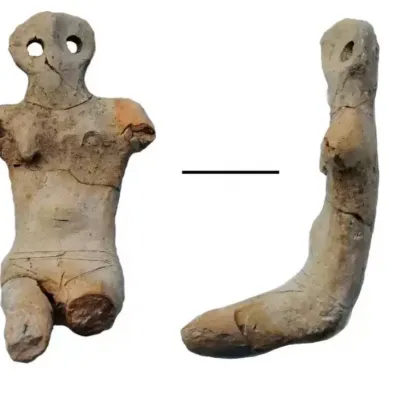
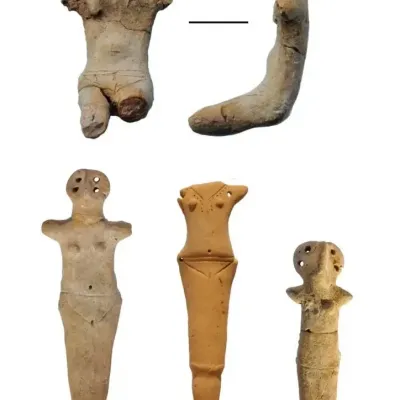 Verteba Cave - Archaeologists discovered five clay female figurines hidden inside a hole in a wall in Verteba Cave, in the Borshchiv Region of western Ukraine. Ritual hoard found in Verteba Cave from around 5,000 years ago illuminates the ritual life of the mysterious Cucuteni-Trypillian culture. These stylized figurines, which date from the first millennium BC, have been linked to the Cucuteni-Trypillian culture, which dominated a large swath of Eastern Europe during the Late Neolithic period and the Copper Age (6,000 to 2,750 BC). The Vertaba cave contains up to 8 kms of passageways used as a Sanctuary by the Cucuteni-Trypillia Culture. The Cucuteni-Trypillian culture is known to have been highly developed for its time, the late Neolithic and Chalcolithic. Some of their settlements were extraordinarily large; they farmed and husbanded domestic animals and had pottery and metallurgical skills. Each individual dwelling site had a lifespan of roughly 60 to 80 years, and the regular destruction or burning of settlements was a mysterious aspect of the culture. Experts still debate the reason behind the burning of these settlements. The religious practices of the Cucuteni-Trypillia Culture are poorly understood, and examples of ceramics discovered are extremely rare. Archaeologists excavating in Verteba Cave, on the other hand, have discovered a massive clay storage jar containing a white organic material (yet to be analyzed). The figurines were most likely used in Trypillian rituals. These statuettes have been identified by archaeologists as totems, which are sacred objects that can protect people from harm. In this case, the figurines were placed inside the cave wall and covered with an unusual seal for equally enigmatic reasons.
Verteba Cave - Archaeologists discovered five clay female figurines hidden inside a hole in a wall in Verteba Cave, in the Borshchiv Region of western Ukraine. Ritual hoard found in Verteba Cave from around 5,000 years ago illuminates the ritual life of the mysterious Cucuteni-Trypillian culture. These stylized figurines, which date from the first millennium BC, have been linked to the Cucuteni-Trypillian culture, which dominated a large swath of Eastern Europe during the Late Neolithic period and the Copper Age (6,000 to 2,750 BC). The Vertaba cave contains up to 8 kms of passageways used as a Sanctuary by the Cucuteni-Trypillia Culture. The Cucuteni-Trypillian culture is known to have been highly developed for its time, the late Neolithic and Chalcolithic. Some of their settlements were extraordinarily large; they farmed and husbanded domestic animals and had pottery and metallurgical skills. Each individual dwelling site had a lifespan of roughly 60 to 80 years, and the regular destruction or burning of settlements was a mysterious aspect of the culture. Experts still debate the reason behind the burning of these settlements. The religious practices of the Cucuteni-Trypillia Culture are poorly understood, and examples of ceramics discovered are extremely rare. Archaeologists excavating in Verteba Cave, on the other hand, have discovered a massive clay storage jar containing a white organic material (yet to be analyzed). The figurines were most likely used in Trypillian rituals. These statuettes have been identified by archaeologists as totems, which are sacred objects that can protect people from harm. In this case, the figurines were placed inside the cave wall and covered with an unusual seal for equally enigmatic reasons.
https://arkeonews.net/5000-year-old-female-figurines-found-in-a-ukrainian-cave/
ISRAEL – 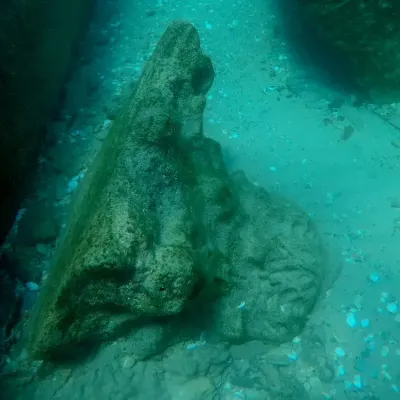
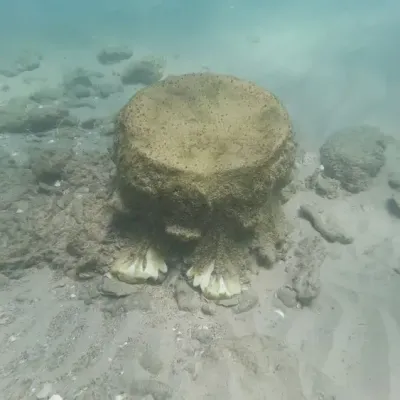 Netanya - The cargo, weighing about 44 tons, includes Corinthian capitals adorned with vegetal patterns, partially carved capitals, and marble columns. The first cargo of its kind known in the Eastern Mediterranean was discovered in the coastal waters near Israel’s central city of Netanya. Huge Roman-period marble architectural elements are the oldest sea cargo of its kind in the region. According to archeologists, it is composed of “Corinthian capitals adorned with vegetal patterns, partially carved capitals, and marble columns” up to 20 ft long. “It seems that these valuable architectural elements were intended to adorn a magnificently elaborate public building—a temple or a theater,” said a press release of the Israel Antiquities Authority (IAA). According to the expert, the cargo came from the Aegean or Black Sea region, in Turkey or Greece. It was likely heading to one of the ports along the southern Levantine coast, Ashkelon or Gaza, or even Alexandria in Egypt. “From the size of the architectural elements, we can calculate the dimensions of the ship; we are talking about a merchant ship that could bear a cargo of at least 200 tons,” said Sharvit. “These fine pieces are characteristic of large-scale, majestic public buildings. Even in Roman Caesarea, such architectural elements were made of local stone covered with white plaster to appear like marble. Here we are talking about genuine marble,” he added.
Netanya - The cargo, weighing about 44 tons, includes Corinthian capitals adorned with vegetal patterns, partially carved capitals, and marble columns. The first cargo of its kind known in the Eastern Mediterranean was discovered in the coastal waters near Israel’s central city of Netanya. Huge Roman-period marble architectural elements are the oldest sea cargo of its kind in the region. According to archeologists, it is composed of “Corinthian capitals adorned with vegetal patterns, partially carved capitals, and marble columns” up to 20 ft long. “It seems that these valuable architectural elements were intended to adorn a magnificently elaborate public building—a temple or a theater,” said a press release of the Israel Antiquities Authority (IAA). According to the expert, the cargo came from the Aegean or Black Sea region, in Turkey or Greece. It was likely heading to one of the ports along the southern Levantine coast, Ashkelon or Gaza, or even Alexandria in Egypt. “From the size of the architectural elements, we can calculate the dimensions of the ship; we are talking about a merchant ship that could bear a cargo of at least 200 tons,” said Sharvit. “These fine pieces are characteristic of large-scale, majestic public buildings. Even in Roman Caesarea, such architectural elements were made of local stone covered with white plaster to appear like marble. Here we are talking about genuine marble,” he added.
https://www.i24news.tv/en/news/israel/archeology/1684142156-rare-cargo-of-1-800-year-old-marble-artifacts-discovered-near-israel-s-netanyaESTONIE – x Narva -
ESTONIE – 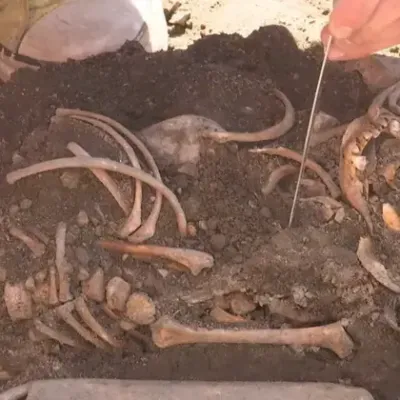 Narva - A "unique" almost 300-year-old mass grave has been discovered in the center of Narva during renovation work. Researchers called the find "unexpected". The grave was discovered during the construction of Stockholmi väljak (Stockholm Square) which is being built next to the Town Hall. Old burial sites have been uncovered before in Estonia, but they have usually been found in cemeteries. In this case, people were buried between houses in an urban environment. The skeletons are several hundred years old and will now be moved to the University of Tartu's archeology laboratory for further investigation. "We now know that there is an adult woman buried, say somewhere over 40 years old, and at least one two-to-three-year-old child, one infant, and another small child. It is probably some kind of accident, for example, a war, a plague, or even a famine," said bone researcher Martin Malve. It is thought the remains are likely to be from the second half of the 17th century or the start of the 18th century due to the depth they were buried at. Malve said it's scientifically important to preserve the find due to its uniqueness and that it might be able to shed more light on the events that befell Estonia during this time.
Narva - A "unique" almost 300-year-old mass grave has been discovered in the center of Narva during renovation work. Researchers called the find "unexpected". The grave was discovered during the construction of Stockholmi väljak (Stockholm Square) which is being built next to the Town Hall. Old burial sites have been uncovered before in Estonia, but they have usually been found in cemeteries. In this case, people were buried between houses in an urban environment. The skeletons are several hundred years old and will now be moved to the University of Tartu's archeology laboratory for further investigation. "We now know that there is an adult woman buried, say somewhere over 40 years old, and at least one two-to-three-year-old child, one infant, and another small child. It is probably some kind of accident, for example, a war, a plague, or even a famine," said bone researcher Martin Malve. It is thought the remains are likely to be from the second half of the 17th century or the start of the 18th century due to the depth they were buried at. Malve said it's scientifically important to preserve the find due to its uniqueness and that it might be able to shed more light on the events that befell Estonia during this time.
https://news.err.ee/1608978722/unique-almost-300-year-old-mass-grave-found-in-narva
ITALIE – 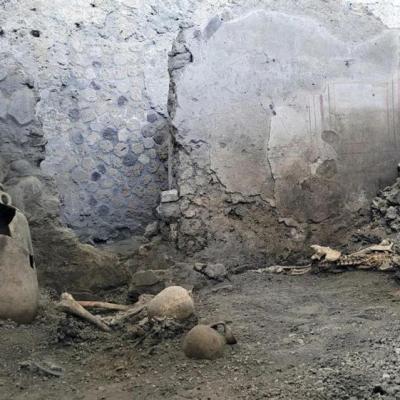 Pompéi - Près de deux mille ans après la destruction de Pompéi, des archéologues ont exhumé deux nouveaux corps dans les ruines d'une célèbre villa romaine, la "Maisons des chastes amants". Les deux squelettes datent de 79 après JC lorsque Pompéi fut détruite par la violente éruption du Vésuve. Les squelettes ont été mis au jour lors de travaux de maintenance, il s'agit probablement de deux hommes d'une cinquantaine d'années, selon le ministère de la culture italien qui a relayé l'information. Ces restent humains, en assez bon état de conservation présentent "des fractures multiples causées par l'écroulement de l'édifice", précise le ministère. Selon les archéologues, les habitants de Pompéi ne sont pas morts uniquement à cause de l'éruption du Vésuve, entraînant des coulées de lave et d'importantes retombées de cendre volcanique, mais aussi du fait du séisme qui l'a accompagnée et qui a provoqué l'écroulement de nombreux bâtiments.
Pompéi - Près de deux mille ans après la destruction de Pompéi, des archéologues ont exhumé deux nouveaux corps dans les ruines d'une célèbre villa romaine, la "Maisons des chastes amants". Les deux squelettes datent de 79 après JC lorsque Pompéi fut détruite par la violente éruption du Vésuve. Les squelettes ont été mis au jour lors de travaux de maintenance, il s'agit probablement de deux hommes d'une cinquantaine d'années, selon le ministère de la culture italien qui a relayé l'information. Ces restent humains, en assez bon état de conservation présentent "des fractures multiples causées par l'écroulement de l'édifice", précise le ministère. Selon les archéologues, les habitants de Pompéi ne sont pas morts uniquement à cause de l'éruption du Vésuve, entraînant des coulées de lave et d'importantes retombées de cendre volcanique, mais aussi du fait du séisme qui l'a accompagnée et qui a provoqué l'écroulement de nombreux bâtiments.
Nouvelle découverte à Pompéi : des squelettes retrouvés dans une ancienne villa romaine (msn.com)
ANGLETERRE – 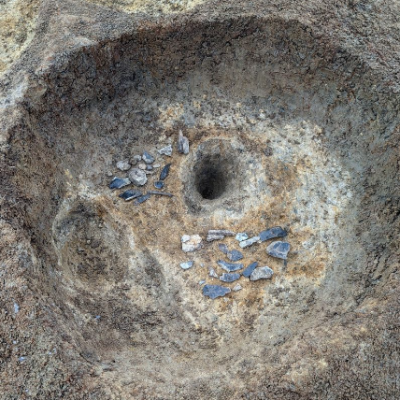
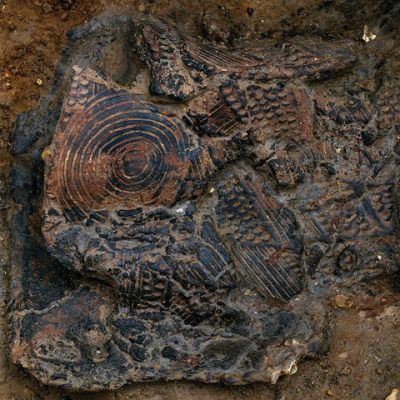 Needingworth - The quarry is one of the largest sand and gravel extraction sites in the UK, managed by Hanson UK, a supplier of low carbon heavy building materials to the construction industry. The site covers an area of approximately 975 hectares, which overtime will be phased to create Britain’s biggest reedbed along with open meres, wet scrub and grassland, all within a 700-hectare nature reserve. A team of archaeologists from the Cambridge Archaeological Unit, part of the Department of Archaeology at the University of Cambridge, have uncovered several clusters of Neolithic pits with datable material such as flint and pottery. Some of the clusters contained Peterborough Ware, a decorated pottery style from the early to middle Neolithic that dates to roughly 3500 to 3000 BC. Peterborough Ware is known for the impressed pits made by bone or wood implements in its sides or circular ‘maggot’ patterns made using whipped cord. One of the most notable discoveries is a decorated complete Grooved Ware pot (header image) from 2900 to 2400 BC. The vessel was found in a pit and was likely deposited whole, which overtime has collapsed from the weight of the soil above. Since many Grooved ware pots have been found at henge sites and in burials, it is possible that they may have had a ritual purpose as well as a functional one.
Needingworth - The quarry is one of the largest sand and gravel extraction sites in the UK, managed by Hanson UK, a supplier of low carbon heavy building materials to the construction industry. The site covers an area of approximately 975 hectares, which overtime will be phased to create Britain’s biggest reedbed along with open meres, wet scrub and grassland, all within a 700-hectare nature reserve. A team of archaeologists from the Cambridge Archaeological Unit, part of the Department of Archaeology at the University of Cambridge, have uncovered several clusters of Neolithic pits with datable material such as flint and pottery. Some of the clusters contained Peterborough Ware, a decorated pottery style from the early to middle Neolithic that dates to roughly 3500 to 3000 BC. Peterborough Ware is known for the impressed pits made by bone or wood implements in its sides or circular ‘maggot’ patterns made using whipped cord. One of the most notable discoveries is a decorated complete Grooved Ware pot (header image) from 2900 to 2400 BC. The vessel was found in a pit and was likely deposited whole, which overtime has collapsed from the weight of the soil above. Since many Grooved ware pots have been found at henge sites and in burials, it is possible that they may have had a ritual purpose as well as a functional one.
https://www.heritagedaily.com/2023/05/neolithic-finds-at-cambridgeshire-quarry/147307
USA – La Fayette - Last week, thanks to a recent archaeological dig at the site in North Union, Reedy was able to confirm with certainty where the fighting occurred. In 1754, a young George Washington was dispatched by Virginia Lt. Gov. Robert Dinwiddie first as a diplomat, and then on a military expedition with a small group of soldiers, when he reported back that French soldiers did not appear to have any intention of leaving the upper Ohio River Valley. Informed of a French encampment in modern-day Fayette County by Mingo Native American allies who also aided in the fighting, Washington's group engaged the French on May 28, 1754, killing 10 and capturing 21 according to the Washington Library. "The 15-minute skirmish that occurs here will change the world," Reedy said. National Park Service archaeologist William Griswold said the dig, which took roughly a month, uncovered five musket balls and "quite a few artifacts." "I have to sort of be intentionally vague," he said, "Because we do occasionally have bad actors who will try to take things out of the national park." But while Griswold could not point to specific areas where items were found, he is planning to analyze them and try to find out more about the skirmish. "We identified the site of the battle, and it happened much the way it's depicted (in NPS literature)," he said. "Scientific analysis is going to continue here as we try and pull apart the information from these ballistics to figure out who fired what." The musket balls will undergo portable X-ray fluorescence, which Griswold said helps to develop a "fingerprint" that could help determine which are French and British in origin.
https://news.yahoo.com/archaeological-dig-fayette-confirms-location-181000370.html
TURQUIE –  Istanbul - During the ongoing excavations in the ruins of Saint Polyeuktos Church in Istanbul’s Saraçhane neighborhood, which was destroyed during the Latin invasion, a 1,500-year-old underground passage has been discovered. A previously unknown underground passage about 20 meters (65 feet) from the nearby Haşim Işçan Passage was discovered. The carved marble blocks and reliefs in the underground passage, which contains mosaics and stone inlays, have impressed researchers.“What is one of the most important aspects of this discovery of a 1,500-year-old passage? Dozens of tremors have passed in these 1,500 years in Istanbul, which is currently struggling with earthquake risk. This structure has managed to survive all these earthquakes. Türkiye should learn the secret and have knowledge of this,” Polat explained. “The mortar with a mixture known as Horasan mortar from the period. We know it is important in terms of the technology of that period. We also examined the surface samples of the structure, such as stone, plaster, and possible gypsum, in the laboratory to determine their composition and archaeometry,” Polat added. During the excavation works in the area, apart from the statue, the teams also found 681 bronze coins, stamped bricks, marble pieces, ceramics, oil lamps, glass, and metal artifacts.
Istanbul - During the ongoing excavations in the ruins of Saint Polyeuktos Church in Istanbul’s Saraçhane neighborhood, which was destroyed during the Latin invasion, a 1,500-year-old underground passage has been discovered. A previously unknown underground passage about 20 meters (65 feet) from the nearby Haşim Işçan Passage was discovered. The carved marble blocks and reliefs in the underground passage, which contains mosaics and stone inlays, have impressed researchers.“What is one of the most important aspects of this discovery of a 1,500-year-old passage? Dozens of tremors have passed in these 1,500 years in Istanbul, which is currently struggling with earthquake risk. This structure has managed to survive all these earthquakes. Türkiye should learn the secret and have knowledge of this,” Polat explained. “The mortar with a mixture known as Horasan mortar from the period. We know it is important in terms of the technology of that period. We also examined the surface samples of the structure, such as stone, plaster, and possible gypsum, in the laboratory to determine their composition and archaeometry,” Polat added. During the excavation works in the area, apart from the statue, the teams also found 681 bronze coins, stamped bricks, marble pieces, ceramics, oil lamps, glass, and metal artifacts.
https://arkeonews.net/1500-year-old-secret-underground-passage-uncovered-in-istanbul/
ISRAEL – 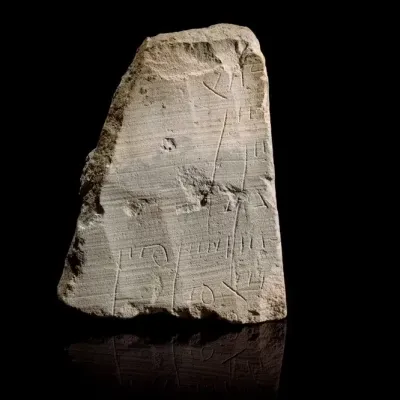 Jerusalem - A financial record dating back to the Second Temple period was discovered on the Pilgrimage Road in Jerusalem’s City of David, the Israel Antiquities Authority (IAA) revealed on Wednesday. The small stone tablet is engraved with letters and numbers. It was discovered in what used to be a bustling commercial area of the city. According to the IAA, the inscription was likely a receipt of a payment instruction. One of the lines ends with the name ‘Shimon’ followed by a Hebrew letter mem, which stands for ‘money’ and symbols representing numbers. This is the first such inscription to be revealed to date within the boundaries of the city of Jerusalem at that period. The researchers believe that "the everyday life of the inhabitants of Jerusalem who resided here 2,000 years ago is expressed in this simple object.” “At first glance, the list of names and numbers may not seem exciting, but to think that, just like today, receipts were also used in the past for commercial purposes, and that such a receipt has reached us, is a rare and gratifying find that allows a glimpse into everyday life in the holy city of Jerusalem," they said.
Jerusalem - A financial record dating back to the Second Temple period was discovered on the Pilgrimage Road in Jerusalem’s City of David, the Israel Antiquities Authority (IAA) revealed on Wednesday. The small stone tablet is engraved with letters and numbers. It was discovered in what used to be a bustling commercial area of the city. According to the IAA, the inscription was likely a receipt of a payment instruction. One of the lines ends with the name ‘Shimon’ followed by a Hebrew letter mem, which stands for ‘money’ and symbols representing numbers. This is the first such inscription to be revealed to date within the boundaries of the city of Jerusalem at that period. The researchers believe that "the everyday life of the inhabitants of Jerusalem who resided here 2,000 years ago is expressed in this simple object.” “At first glance, the list of names and numbers may not seem exciting, but to think that, just like today, receipts were also used in the past for commercial purposes, and that such a receipt has reached us, is a rare and gratifying find that allows a glimpse into everyday life in the holy city of Jerusalem," they said.
https://www.i24news.tv/en/news/israel/archeology/1684305181-archeologists-find-2-000-year-old-stone-receipt-in-jerusalem-s-city-of-david
ITALIE - 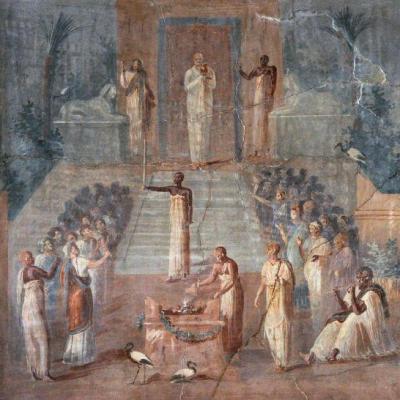 Pompéi - The ancient remains of at least 10 birds have been found at a temple of Isis in the Roman city of Pompeii, indicating that birds were a key feature of worshipping the goddess. Archaeologists excavating the Temple of Isis in Pompeii have discovered the remains of a ritual banquet where dozens of birds were eaten, possibly to placate the goddess after her temple was downsized. The find shows the importance of birds to worshippers of Isis, an Egyptian cult that had become established in Roman society by the first century A.D., according to a study published April 27 in the International Journal of Osteoarchaeology. "The ritual … was likely performed by three priests of Isis in a single day," possibly to atone for renovations that had made the temple slightly smaller, study first author Chiara Corbino, an archaeologist at Italy's Institute of Heritage Science, told Live Science in an email. The excavations revealed the charred remains of at least eight chickens, a goose, a turtle dove, a pig and two clams; part of the meat would be cooked and eaten by the priests, while the rest would have been set out on the floor as an offering to Isis.
Pompéi - The ancient remains of at least 10 birds have been found at a temple of Isis in the Roman city of Pompeii, indicating that birds were a key feature of worshipping the goddess. Archaeologists excavating the Temple of Isis in Pompeii have discovered the remains of a ritual banquet where dozens of birds were eaten, possibly to placate the goddess after her temple was downsized. The find shows the importance of birds to worshippers of Isis, an Egyptian cult that had become established in Roman society by the first century A.D., according to a study published April 27 in the International Journal of Osteoarchaeology. "The ritual … was likely performed by three priests of Isis in a single day," possibly to atone for renovations that had made the temple slightly smaller, study first author Chiara Corbino, an archaeologist at Italy's Institute of Heritage Science, told Live Science in an email. The excavations revealed the charred remains of at least eight chickens, a goose, a turtle dove, a pig and two clams; part of the meat would be cooked and eaten by the priests, while the rest would have been set out on the floor as an offering to Isis.
https://www.livescience.com/archaeology/romans/ancient-romans-sacrificed-birds-to-the-goddess-isis-burnt-bones-in-pompeii-reveal
ANGLETERRE – Alderney - Dig Alderney is working on Longis Common where an Iron Age Cemetery lies, with a Roman settlement built over the top. Dr Monaghan said: "Ten days in we haven't found any Roman buildings, but what we have found is a very large amount of Roman material. "We've found probably a thousand pieces of Roman pottery so far, and we've also found some objects from the Iron Age, which obviously have kicked up into the Roman layers." Work at the dig is due to continue until 27 May.
https://www.bbc.com/news/world-europe-guernsey-65620681
FRANCE – 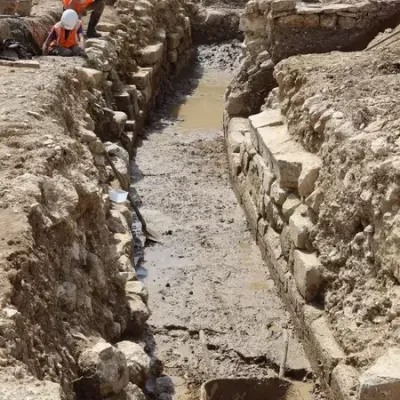 Verdun - Ce qui a marqué le quartier, c'est la présence de l'abbaye et de moines. Mais jusque-là on ne savait pas précisément où elle se trouvait. Le quartier Saint-Paul est bien connu des habitants, mais la disposition exacte des lieux n’était pas précise. Désormais, on sait que c’est exactement ici que se trouvait l’abbaye. Les traces les plus anciennes remontent au septième siècle . Il a été déterminé qu’il y a bien ici une nécropole liée à la construction d’une église qui s’est poursuivie jusqu’au 10è siècle. Elle a été transformée en abbaye à ce moment-là. Le site a ensuite été aménagé progressivement, avec notamment la construction de canaux pour amener de l’eau et alimenter un moulin. Le quartier et l’abbaye Saint Paul ont été totalement détruits en 1551 pour éviter que les armées de Charles Quint ne s’emparent de la ville, mais le travail récent des archéologues montre que le site a a connu des phases de destructions / reconstructions antérieures, avec notamment la mise au jour de nombreux murs qui se chevauchent. Des incertitudes demeurent néanmoins sur l’organisation globale de l’abbaye. Des structures imposantes et de la maçonnerie en gros appareil ont été répertoriés, mais les scientifiques ignorent toujours à quoi servaient les fosses rubéfiées (rougies par le feu) qui ont été découvertes : four à chaux, à céramique pour orner l’abbaye ?
Verdun - Ce qui a marqué le quartier, c'est la présence de l'abbaye et de moines. Mais jusque-là on ne savait pas précisément où elle se trouvait. Le quartier Saint-Paul est bien connu des habitants, mais la disposition exacte des lieux n’était pas précise. Désormais, on sait que c’est exactement ici que se trouvait l’abbaye. Les traces les plus anciennes remontent au septième siècle . Il a été déterminé qu’il y a bien ici une nécropole liée à la construction d’une église qui s’est poursuivie jusqu’au 10è siècle. Elle a été transformée en abbaye à ce moment-là. Le site a ensuite été aménagé progressivement, avec notamment la construction de canaux pour amener de l’eau et alimenter un moulin. Le quartier et l’abbaye Saint Paul ont été totalement détruits en 1551 pour éviter que les armées de Charles Quint ne s’emparent de la ville, mais le travail récent des archéologues montre que le site a a connu des phases de destructions / reconstructions antérieures, avec notamment la mise au jour de nombreux murs qui se chevauchent. Des incertitudes demeurent néanmoins sur l’organisation globale de l’abbaye. Des structures imposantes et de la maçonnerie en gros appareil ont été répertoriés, mais les scientifiques ignorent toujours à quoi servaient les fosses rubéfiées (rougies par le feu) qui ont été découvertes : four à chaux, à céramique pour orner l’abbaye ?
https://france3-regions.francetvinfo.fr/grand-est/meuse/verdun/les-origines-du-quartier-saint-paul-de-verdun-mises-a-jour-grace-a-des-fouilles-archeologiques-2774218.html